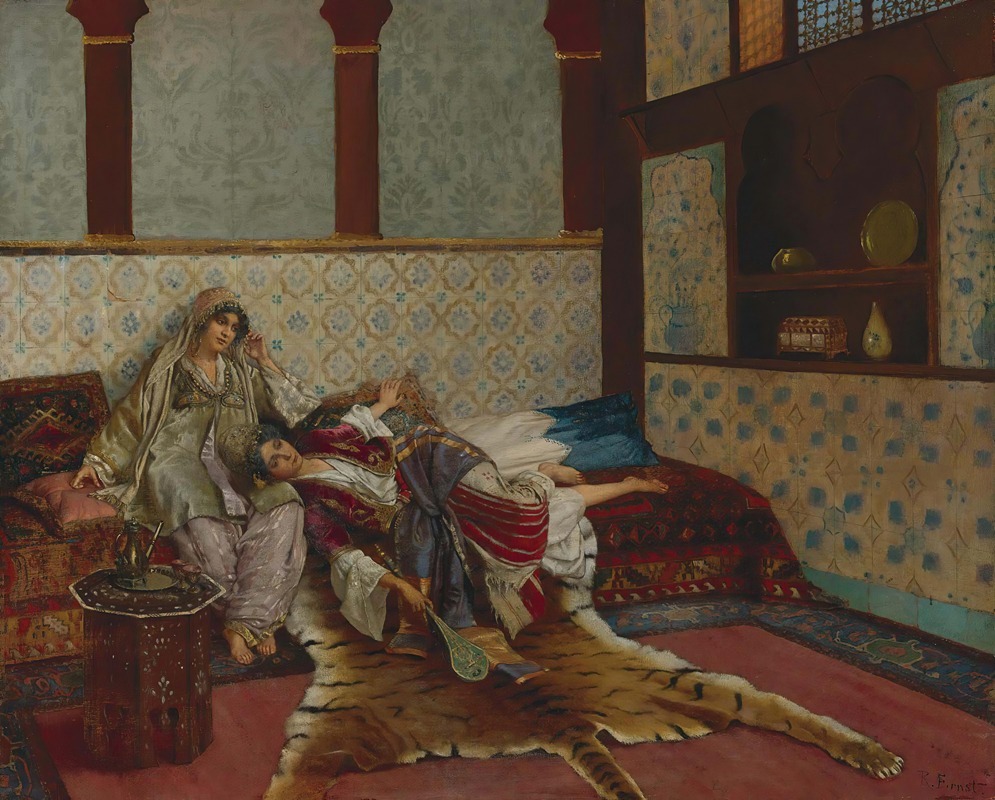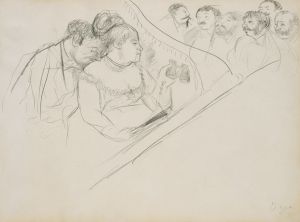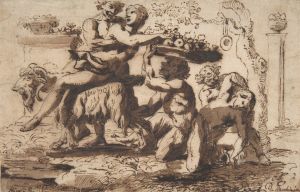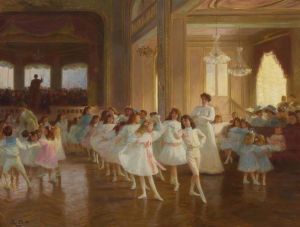
The Forgotten Tune
A hand-painted replica of Rudolf Ernst’s masterpiece The Forgotten Tune, meticulously crafted by professional artists to capture the true essence of the original. Each piece is created with museum-quality canvas and rare mineral pigments, carefully painted by experienced artists with delicate brushstrokes and rich, layered colors to perfectly recreate the texture of the original artwork. Unlike machine-printed reproductions, this hand-painted version brings the painting to life, infused with the artist’s emotions and skill in every stroke. Whether for personal collection or home decoration, it instantly elevates the artistic atmosphere of any space.
Rudolf Ernst was an Austrian painter known for his Orientalist works, which often depicted scenes inspired by the cultures, architecture, and daily life of the Middle East and North Africa. One of his notable paintings, The Forgotten Tune, exemplifies his fascination with intricate details and vibrant colors, hallmarks of his artistic style.
The Forgotten Tune portrays a serene interior scene, characteristic of Ernst's Orientalist themes. The painting features a musician seated in an opulent setting, surrounded by richly decorated textiles, ceramics, and architectural elements. The title suggests a moment of reflection or nostalgia, as the musician appears to be contemplating a melody. Ernst's meticulous attention to detail is evident in the ornate patterns of the carpets, the intricate designs of the tiles, and the luminous quality of the light filtering into the space. These elements reflect his ability to create a sense of intimacy and atmosphere in his work.
Ernst was part of a broader movement of 19th-century European artists who were influenced by the cultures of the Middle East and North Africa. His works, like those of his contemporaries, were shaped by the Orientalist trend, which often romanticized and idealized the regions it sought to depict. While Ernst's paintings are celebrated for their technical skill and aesthetic appeal, it is important to view them within the context of their time, as they often reflect the Western perceptions and interpretations of the East rather than an authentic representation.
Born in Vienna in 1854, Rudolf Ernst studied at the Academy of Fine Arts in Vienna before traveling extensively, including to Spain, Morocco, and Turkey. These travels deeply influenced his artistic output, providing him with inspiration for the settings, costumes, and objects that populate his paintings. Ernst eventually settled in France, where he continued to produce works that captured the imagination of European audiences.
Today, The Forgotten Tune is appreciated as an example of Ernst's mastery of composition and his ability to evoke a sense of timelessness. The painting is part of the broader legacy of Orientalist art, which remains a subject of both admiration and critical examination in art historical discourse.


















